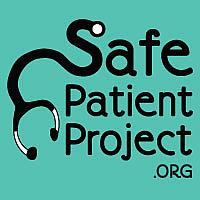10 Things I Learned at the Consumers Union Safe Patient Summit - Part 2

6. The red carpet may need a new award. Consumers Union's Lisa McGiffert said, "We need to call out the bad actors. Everyone wants to highlight the good performers. It's more important to highlight the ones who have the highest rates of problems and call attention to them."
McGiffert and others at the summit believe that making examples of health care providers who have high infection rates or low survival rates or other problems let's people know where something is going wrong and encourages others to make improvements. This prompted Pat Mastors to say, "They have the Razzie awards for bad actors, and that always gets attention. We need to come up with some kind of award for bad acting in health care." As a potential title for such an award, I propose "The Itchy."
7. Even half the data are better than no data. Bob Oshel created the National Practitioner Data Bank's Public Use Data File and, following a Congressional mandate, he set it up to be inaccessible to the general public. This includes journalists, to their eternal vexation. But, as Oshel pointed out at the summit, the NPDB Public Use Data File that is available from the NPBD can be hugely useful to measure how state agencies and hospitals are performing relative to their peers.
For example, you can use the public data, which does not include any names, to see how many hospitals have made a query about a health professional and how often. Hospitals are required to query the database once every two years on their medical staffs and to query all new applicants. Given the number of medical professionals in the US, this is clearly not happening, Oshel said. Worse, the hospitals are not reporting doctors, nurses and other health professionals, either. "Only half the hospitals have ever reported a doctor to the data bank in last 20 years," Oshel said.
8. Sometimes what is not happening is the story. Oshel noted that the U.S. Drug Enforcement Agency should report to the NPDB against a doctor, including cases where doctors voluntarily surrender their right to prescribe addictive narcotics. "Even voluntary surrenders are supposed to be reported, but DEA hasn't been doing that," Oshel said. I underlined this a few times in my notebook. Wouldn't this make a great story? How many doctors have been disciplined by the DEA but not made their way to the NPDB? Might Dr. Harrell Robinson have an unblemished record there?
9. Keep your stories focused on the big picture, but let patients tell their stories, too. Marshall Allen at the Las Vegas Sun has been rolling out an incredible series of stories about the sorry state of hospital care in Vegas called Do No Harm. One of the best features of this multimedia, interactive series has been how much evidence Allen and his colleagues have amassed and how clearly they walk readers through the evidence.
But Allen also has conducted in-depth interviews with patients, some of which are included as videos on the site. If you want the emotional stuff, watch the videos. If you want the hard evidence, read the stories and click through the databases. It's all there and beautifully told.
Allen quoted from a letter that Dr. Mitchell Forman, president of the Clark County Medical Society, sent to doctors complaining about the series, writing, "It takes the raw data and connects it to people." Reporters wish all complaints could be so complimentary. According to Allen, Mitchell admitted later that he hadn't read the whole series before sending that letter and later had a change of heart.
10. Get a subscription to Consumers Union. Is this a shameless plug? No. The truth is I had no idea how extensive their health care ratings database was, because I had not ventured past the CU paywall. The amount of information the Consumers Union's Doris Peter showed was stunning. Health plan rankings. Comparisons of heart care centers. Hospital report cards. This is all incredibly useful and underused by health writers.
As ProPublica's Charles Ornstein pointed out, if more reporters demanded access to information about hospitals, doctors and other health care providers, states would feel more pressure to make it available.
"Push states to put their 2567 hospital inspection forms online," Ornstein said, citing one example of a useful public record that is hard to unearth. "The hospital lobby is much more powerful than the nursing home lobby, so you can find more information on nursing homes more easily and the ratings on nursing homes are more detailed than on hospitals. You can change that."
Related Posts:
10 Things I Learned at the Consumers Union Safe Patient Summit - Part 1

